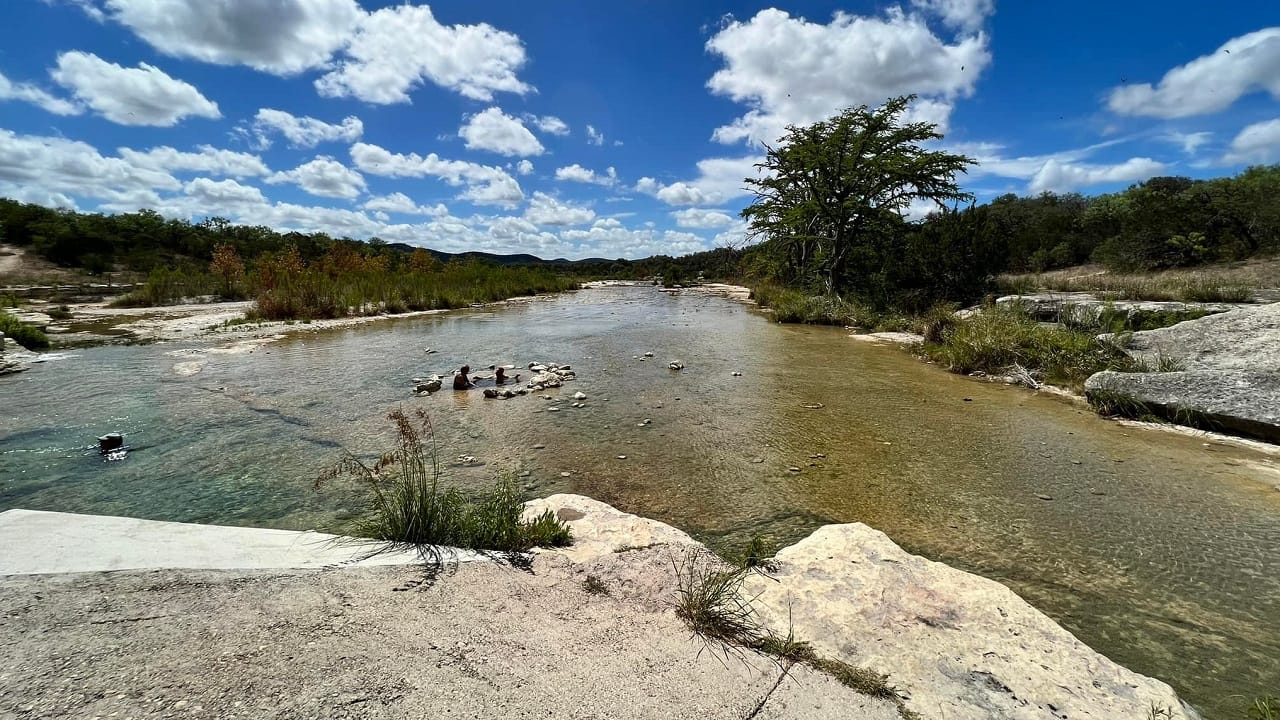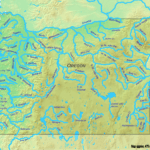Get ready to dive into the captivating world of the Frio River! We’re going to explore the secrets of its flowing waters. From gushing rapids to serene stretches, we’ll uncover how the river’s natural rhythms affect its wildlife and surroundings. So, let’s set sail and discover the enchanting tale of the Frio River!
Frio River Flow: A Dynamic Dance of Nature
The Frio River, celebrated for its crystal-clear waters and scenic beauty, isn’t always a picture of peaceful tranquility. Its flow is dynamic, sometimes calm and gentle, other times a raging torrent. This variability makes the Frio fascinating and is due to a unique blend of climate and geology.
Imagine the Frio River Basin as a giant sponge, resting atop a porous limestone bedrock. When it rains, water doesn’t just flow over the ground; a significant portion seeps directly into this “sponge.” This means the river’s flow isn’t solely dependent on recent rainfall but is also influenced by the amount of water stored underground. And sometimes, that underground reservoir can be depleted.
The United States Geological Survey (USGS) has been tracking the Frio River’s flow since 1923. Their data reveals a history of extremes: periods of severe drought where the riverbed lay bare, contrasted with powerful floods that reshaped the landscape.
Today, we have the advantage of real-time updates. The National Weather Service (NWS) provides up-to-date information on the Frio’s flow, issuing flood warnings and safety guidelines to help people stay safe.
For those who want to explore the data themselves, the USGS Water Data platform and the National Water Dashboard offer a wealth of information on the Frio’s flow, including discharge rates and gage heights. These resources provide a glimpse into the dynamic forces shaping the river.
Looking towards the future, scientists are studying how climate change might influence the Frio’s flow. Will we see more droughts, more floods, or a combination of both? It’s a critical question, given the Frio River’s importance to the local ecosystem and the people who depend on it.
Understanding the Frio River’s flow isn’t just about satisfying curiosity. It’s about respecting the river’s power, appreciating its complexities, and ensuring its health for generations to come.
Is the Frio River Flowing Right Now? How to Check Current Conditions
Curious about the Frio River’s current state? Wondering if it’s gushing or just a trickle? That’s wise, given recent weather patterns.
Unfortunately, the Frio River is experiencing historically low water levels, with some areas completely dried up. This is a concern not only for those seeking a refreshing swim but also for the fish and wildlife that depend on the river.
Several factors are contributing to this situation. Texas has been grappling with a prolonged drought, and climate change is likely exacerbating the situation, leading to hotter temperatures and increased evaporation.
To get accurate information on the Frio’s flow, we can turn to data. Scientists have strategically placed “streamgauging stations” along the river to constantly measure the water flow. The Concan station, for example, is currently reporting critically low levels.
While a slight dip in water level might seem insignificant, it can have cascading effects. Fish may struggle to find food and shelter, and water quality can deteriorate. Additionally, local businesses reliant on river tourism may experience economic hardship with fewer visitors.
Here’s a summary of the current situation:
- The Frio River is facing critically low water levels, reaching historic lows in some areas.
- The primary factors contributing to this are the ongoing drought and the effects of climate change.
- Real-time flow measurements from stations like the one at Concan can be accessed on the USGS website.
- These low water levels pose threats to the environment and the local community.
By raising awareness about the Frio River’s plight and promoting water conservation efforts, we can all play a role in protecting this valuable resource.
Understanding Frio River Water Levels – A Comprehensive Guide
The Frio River’s flow is constantly in motion, much like a dance. Understanding the factors that cause these fluctuations in water levels deepens our appreciation for the river’s resilience.
Key Takeaways:
- The Frio River’s flow is influenced by rainfall and the unique geology of its riverbed, which consists of porous limestone that acts like a giant sponge.
- Current flow rates are significantly lower than average, indicating potential drought conditions.
- Streamgauging stations serve as the river’s health monitors, providing real-time updates on its condition.
- Protecting the Frio River’s flow is paramount to preserving its health for both the ecosystem and human enjoyment.
- Low water levels serve as a reminder of the importance of water conservation.
The Frio River’s water levels are not static; they are influenced by various factors, primarily rainfall and the absorptive nature of its limestone bedrock. These fluctuations highlight the river’s adaptability.
Currently, the river’s flow is significantly lower than usual, measuring only about 11% of its average volume. This suggests the possibility of drought conditions, emphasizing the importance of responsible water use.
To monitor the Frio River’s water levels, streamgauging stations are strategically placed along its course. These stations function as the river’s health monitors, tracking the amount of water flowing, water height, and overall water quality. The Frio Rv at Concan station, situated at a key point on the river, provides crucial data.
Understanding the Frio River’s water levels is about more than just data points; it’s about safeguarding a precious resource. Low water levels can negatively impact fish and plant life within the river and limit water availability for human use, even affecting recreational activities like swimming and fishing.
As our climate changes, managing water resources effectively becomes increasingly crucial. By understanding and protecting the Frio River, we can help ensure its health and beauty for future generations.
Frio River Flow History – What Data Reveals About Trends and Patterns
The Frio River, that picturesque waterway flowing through Concan, Texas, has been noticeably low in recent times. Some areas have even dried up entirely, raising concern among those who cherish it. To understand these changes, looking back at the river’s historical behavior is essential.
Data collected over time provide insight into the river’s natural fluctuations. The USGS, for instance, reports that the average flow rate of the Frio River, just downstream from where the Dry Frio River merges with it, is typically around 20.5 cubic feet per second. Recent measurements, however, are cause for concern, showing a significant drop to just 10% of the normal flow.
Analyzing historical flow data allows researchers to identify patterns and long-term trends. Rainfall records can reveal past droughts, while evaporation rates indicate how much water is being lost to the atmosphere. Additionally, changes in land use, such as increased pavement and development, can reduce the amount of water that replenishes the river. By comparing current low levels to historical data, experts can better assess whether this is a natural anomaly or a result of human activities.
Beyond the quantity of water, its quality is also crucial. Low flow can lead to a higher concentration of pollutants and reduced dissolved oxygen, which is vital for aquatic life. Examining water quality data alongside flow data provides a comprehensive understanding of the Frio’s health.
Understanding the Frio River’s flow history is not merely an academic exercise; it’s about making informed decisions to ensure the long-term health of this precious resource. By studying flow patterns, identifying concerning trends, and monitoring water quality, we can work towards preserving the Frio River for future generations.
Interested in exploring more of Texas’s beautiful waterways? Discover the diverse range of rivers in Texas, from the meandering Lavaca River in South Texas to the crystal-clear waters perfect for tubing. Don’t miss out on experiencing the clearest water in Texas – a testament to nature’s pristine beauty.
- Mastering Leader in Spanish: The Complete Guide - April 19, 2025
- Uncovering Surprising Parallels: England Size Compared to US States - April 19, 2025
- Old Mexico Map: Border Shifts 1821-1857 - April 19, 2025
















